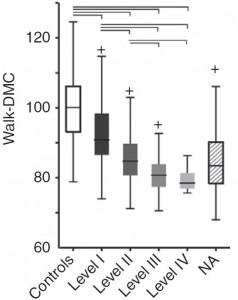 Sasha Portnova is presenting her research on 3D-printed wrist-driven hand orthoses today in The International Conference of Undergraduate Research (ICUR). The conference is an annual multidisciplinary forum that connects students from universities in seven countries across the world. Sasha was the sole person selected from the ME department at UW to present. Great work, Sasha!
Sasha Portnova is presenting her research on 3D-printed wrist-driven hand orthoses today in The International Conference of Undergraduate Research (ICUR). The conference is an annual multidisciplinary forum that connects students from universities in seven countries across the world. Sasha was the sole person selected from the ME department at UW to present. Great work, Sasha!
Publications
Capacity Building Institute
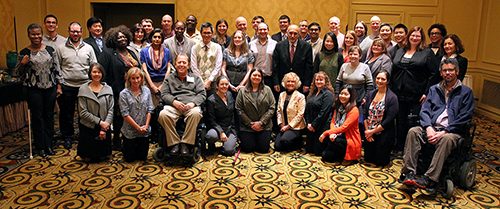 The proceedings from AccessEngineering’s first Capacity Building Institute have been published on-line.
The proceedings from AccessEngineering’s first Capacity Building Institute have been published on-line.
This institute focused on bringing together faculty, staff, and students from engineering departments around the country to discuss how to support individuals with disabilities in pursuing careers in engineering.
There were many wonderful presentations and discussions. In particular check out:
- Panel of engineers and students
- Recommendations for making engineering more accessible
- Universal design in the engineering curriculum
These discussions helped to inform several new resources from AccessEngineering including:
- Making a Makerspace? Guidelines for Accessibility and Universal Design
- Equal Access: Universal Design of Engineering Departments
- Equal Access: Universal Design of Engineering Labs
- Checklist for Making Engineering Labs Accessible to Students with Disabilities
The Capacity Building Institute was hosted at the University of Washington-Seattle April 7-9, 2015. Please let us know if you are interested in participating next year!
EASI Webinar
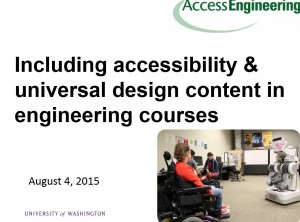 AccessEngineering presented a webinar with Equal Access to Software and Information (EASI) on:
AccessEngineering presented a webinar with Equal Access to Software and Information (EASI) on:
Incorporating universal design topics into postsecondary computer science and engineering courses
Speakers included Kat Steele from Mechanical Engineering, Maya Cakmak and Richard Ladner from Computer Science & Engineering, and Sheryl Burgstahler from UW’s DO-IT program. You can still watch the webinar and learn some techniques for integrating universal design and accessibility into your lectures, courses, or labs here.
KM Steele, A Rozumalski, MH Schwartz (2015) “Muscle synergies and complexity of neuromuscular control during gait in cerebral palsy.” Developmental Medicine & Child Neurology
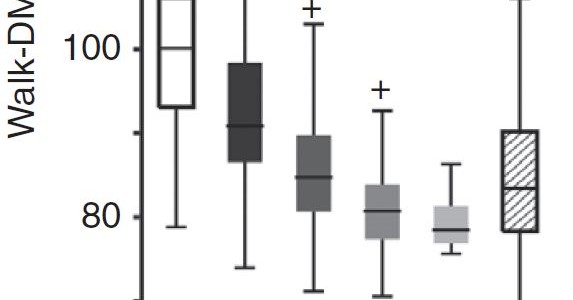
Journal article accepted in Developmental Medicine & Child Neurology:
Kat Steele partnered with Mike Schwartz and Adam Rozumalski of Gillette Children’s Specialty Healthcare to complete one of the largest studies to date of individuals with cerebral palsy. They quantified how neuromuscular control is altered among individuals with cerebral palsy and how this altered control can contribute to impaired function.
Abstract: Individuals with cerebral palsy (CP) have impaired movement due to a brain injury near birth. Understanding how neuromuscular control is altered in CP can provide insight into pathological movement. We sought to determine if individuals with CP demonstrate reduced complexity of neuromuscular control during gait compared with unimpaired individuals and if changes in control are related to functional ability. Muscle synergies during gait were retrospectively analyzed for 633 individuals (age range 3.9–70y): 549 with CP (hemiplegia, n=122; diplegia, n=266; triplegia, n=73; quadriplegia, n=88) and 84 unimpaired individuals. Synergies were calculated using non-negative matrix factorization from surface electromyography collected during previous clinical gait analyses. Synergy complexity during gait was compared with diagnosis subtype, functional ability, and clinical examination measures. Fewer synergies were required to describe muscle activity during gait in individuals with CP compared with unimpaired individuals. Changes in synergies were related to functional impairment and clinical examination measures including selective motor control, strength, and spasticity. Interpretation: Individuals with CP use a simplified control strategy during gait compared with unimpaired individuals. These results were similar to synergies during walking among adult stroke survivors, suggesting similar neuromuscular control strategies between these clinical populations. PDF
Also, make sure you look at the commentary from Diane Damiano. She provides perspective about the utility of synergies for evaluating neuromuscular control in children with cerebral palsy and future challenges.
KM Steele, A Rozumalski, MH Schwartz, “Altered muscle synergies during gait in cerebral palsy are not due to altered kinematics or kinetics.” International Society of Biomechanics (Glasgow, UK) July 15, 2015.
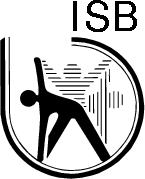 Kat Steele presented our recent work on altered synergies during gait in cerebral palsy and the impact of altered gait patterns at the International Society of Biomechanics conference on July 15, 2015 in Glasgow, Ireland.
Kat Steele presented our recent work on altered synergies during gait in cerebral palsy and the impact of altered gait patterns at the International Society of Biomechanics conference on July 15, 2015 in Glasgow, Ireland.

